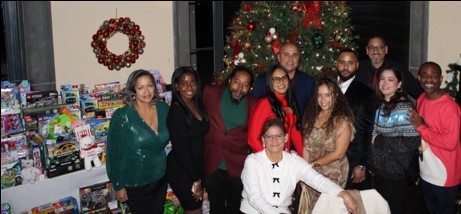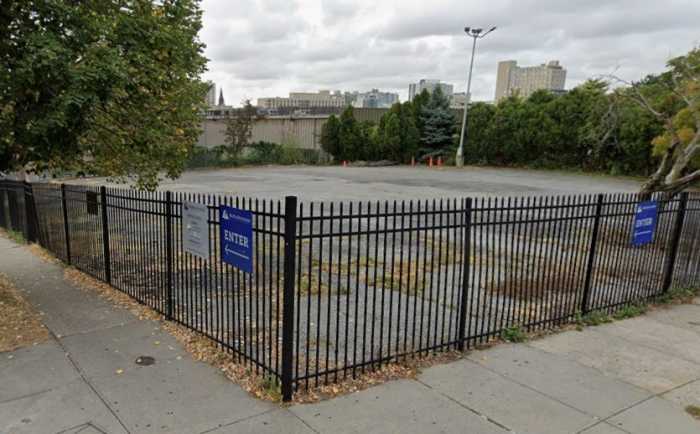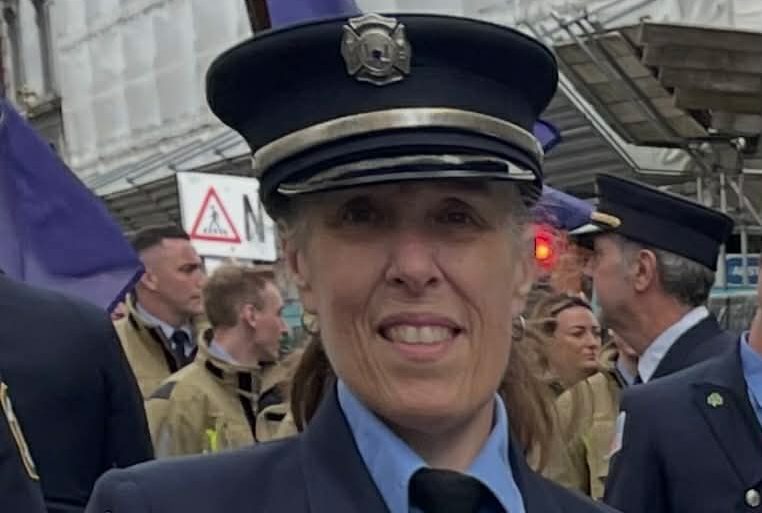When Ibi Zoboi was in high school in Bushwick and reading Edwidge Danticat’s “Breath Eyes and Memory,” she discovered her mother’s hometown in Haiti, Dame Marie, mentioned in the first few pages of the book. “It was then I decided to be a writer,” she said.
‘I had the desire to read but books weren’t that accessible for me,’ she explained growing up with an immigrant single mother.
Two decades later and now an author, herself, Zoboi is committed to supporting reading for girls and also writers of color.
On Saturday, at the Skylight Gallery inside Bedford Stuyvesant Restoration Plaza, four local children’s book authors participated in a panel on their books and writing, organized by Zoboi.
The event was held in conjunction with and followed the Restoration’s annual RFK Memorial Holiday Party activities where the author’s books were given out as Christmas presents.
Three pre-teen girls from the Brooklyn Blossom Book Club began the afternoon by reading passages from National Book Award winner Jacqueline Woodson’s Brown Girl Dreaming, a series of vignettes in verse of her childhood.
The panelists then gave background to their books before reading selections. Woodson read three chapters: she wrote of respecting leaving the classroom during the Pledge of Allegiance in respect to her grandparents’ Jehovah Witness beliefs; she told of her uncle becoming a Black Muslim in prison, and she described the historical origins of Bushwick, her neighborhood growing up.
Author Renee Watson read from her middle grade novel “What Momma Left Me,” which is about a girl in middle school coming to terms with the violent death of her mother at the hands of her father.
Children’s literature award winner Tonya Cherie Hegamin read from her historical fiction novel “Willow,” which is about life on either side of the boundary of slavery and freedom, the Mason-Dixon line.
The fourth panelist Zetta Elliot selected a passage from her self-published “An Angel for Mariqua” for early readers inspired by a girl she met on a school visit who was teased because her father was in prison.
Abadai Zoboi, age 12, led the pre-teens in questioning the authors by asking how much does your environment affect their stories.
When Abadai asked, “Who inspired you?” Many of the panelists agreed that they learned about writing from reading other writers. Elliot mentioned Toni Morrison and Jamaica Kincaid. Woodson mentioned John Steptoe and James Baldwin.
“My students are a big inspiration,” said Medgar Evers English professor Hegamin. She grew up amidst uncles and aunts who “were reading all the time.” She added, “I wrote since I was six years old.”
Watson, who writes poetry and theater, mentioned news and current events as an influence. ‘My work is a way to talk back. I make art in response to what’s around.”
Bringing on chuckles, National Book Award winner Woodson admitted, “I used to lie a lot as a kid. My teacher told me if I write it down, it’s called fiction.”
“The hardest part of writing Brown Girl Dreaming,” she said, “was all the questions I had for my mom who had passed away, sometime before. I interviewed family and friends to find out about her.”
Questions were open to attendees, many who are writers: Where do your ideas come from? How do you get published?
It was noted that of the 3,000 children books published a year, only three percent have main characters who are children of color.
Elliot mentioned that she decided to self-publish after publishing books, and not getting much traction, with the traditional, book publisher route (“Bird,” “A Wish After Midnight,” and “Ship of Souls”).
Woodson sits on the board of directors of We Need Diverse Books, which pushes traditional publishers to include more authors and protagonists of color among the books they choose to make available.
Following the discussion authors signed their books, which were available for purchase from Fort Greene’s Greenlight Books, which carries a wide selection of diverse books for children and young adults.
The photo exhibit “I AM HERE: Girls Reclaiming Safe Spaces” by Delphine Fawundu—black-and-white photos of black girls in New York City, Haiti, Ghana, Nigeria, and South Africa is currently on exhibit in the Skylight Gallery.
























